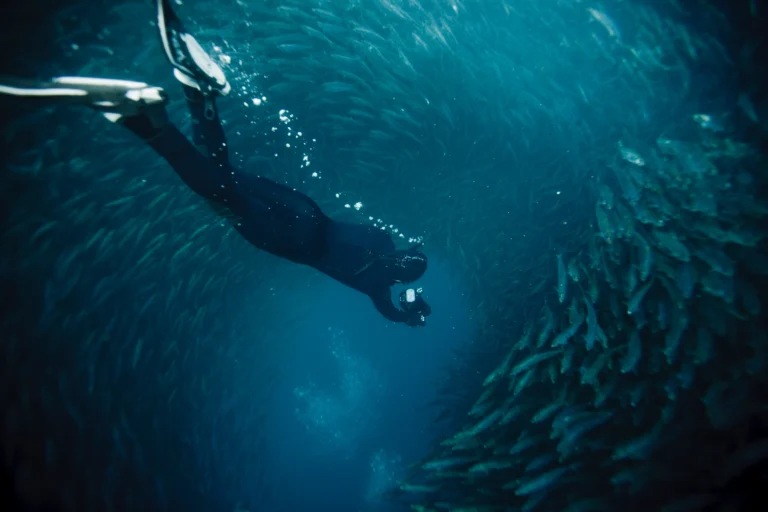Physical Fitness and Breath-Holding Exercises

Maximizing Spearfishing Success:
Spearfishing demands a unique blend of physical fitness and breath-holding abilities to navigate underwater terrain, pursue elusive prey, and execute precise shots with efficiency and accuracy. Whether you’re a novice or seasoned spearfisher, incorporating specific exercises into your training regimen can significantly enhance your performance and enjoyment in the water. Here’s a comprehensive guide to physical fitness and breath-holding exercises tailored specifically for spearfishing:
Physical Fitness Training
- Cardiovascular Endurance: Engage in activities that elevate your heart rate and improve cardiovascular fitness, such as swimming, running, cycling, or high-intensity interval training (HIIT). Cardiovascular endurance is crucial for sustaining prolonged dives and navigating currents effectively.
- Strength and Power: Develop strength and power in your core, upper body, and legs to handle equipment, maneuver underwater, and maintain stability during dives. Incorporate exercises like push-ups, pull-ups, squats, lunges, and kettlebell swings into your routine to build functional strength.
- Flexibility and Mobility: Maintain flexibility in your muscles and joints to facilitate smooth movements and prevent injuries underwater. Incorporate dynamic stretching, yoga, and mobility drills to improve flexibility and range of motion.
- Breath Control: Practice diaphragmatic breathing exercises to improve breath control and oxygen efficiency. Focus on deep, slow breaths that engage your diaphragm and expand your lung capacity, allowing you to maximize oxygen uptake and prolong breath-holding times.
Breath-Holding Exercises
- Static Apnea Holds: Perform static apnea holds to gradually increase your breath-holding capacity and tolerance to elevated levels of carbon dioxide. Start with short intervals of breath-holding (e.g., 30 seconds to 1 minute) and gradually extend the duration over time as you improve.
- Dynamic Apnea Drills: Practice dynamic apnea drills, such as swimming underwater while holding your breath, to simulate the demands of spearfishing. Focus on maintaining relaxed and efficient swimming technique while conserving oxygen and energy.
- CO₂ Tolerance Training: Incorporate CO₂ tolerance training into your breath-holding exercises by intentionally inducing mild hypercapnia (elevated carbon dioxide levels). This can be achieved by hypoventilating (reduced breathing) before breath-holding, gradually increasing your tolerance to CO₂ and delaying the urge to breathe.
- Interval Training: Combine breath-holding exercises with interval training to simulate the intermittent bursts of activity and rest experienced during spearfishing dives. Alternate between periods of breath-holding and recovery breathing to improve recovery time and adaptability to changing conditions underwater.
Safety Considerations
- Always practice breath-holding exercises in a safe and controlled environment, preferably under the supervision of a trained instructor or experienced dive buddy.
- Never push yourself beyond your limits or ignore signs of discomfort or distress during breath-holding exercises.
- Prioritize safety and gradual progression to minimize the risk of shallow-water blackout or other complications related to hypoxia or hypercapnia.
Conclusion
Physical fitness and breath-holding abilities are essential components of successful spearfishing. By incorporating targeted exercises into your training routine, you can improve cardiovascular endurance, strength, breath control, and tolerance to carbon dioxide, ultimately enhancing your performance and safety underwater. Remember to prioritize safety, gradual progression, and mindfulness during training, and always listen to your body’s signals. With dedication and practice, you’ll be well-prepared to embark on unforgettable spearfishing adventures and connect with the underwater world in profound ways.


